Teens donning colourful overalls and partying all night with the blessing of their parents? Welcome to the Norwegian rite of passage known as russefeiring.
In late April, the streets start to fill with older teenagers dressed in bright overalls. A period of partying culminates in a blowout on 16 May, the night before Norway's Constitution Day. Then those same students sit their exams. This is the story of the russ.
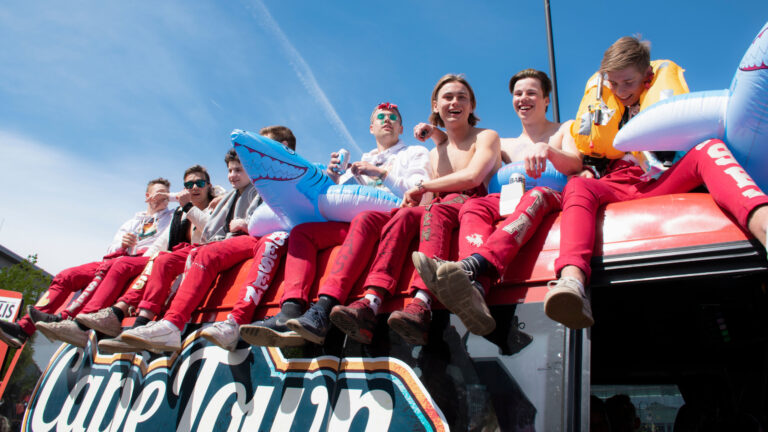
Back in 2012, I wrote a brief story about the russ as I was so curious about the phenomenon. We had nothing like it in England. The closest thing we had was signing each other's shirts on the last day of school, and making several failed attempts to go for a beer in the village pub.
That original story was big on curiosity but light on detail. But now, so many years later, it was high time to update that article! I've lived through more than ten russefeiring periods now so I've learned a fair bit about what's going on.
So, with that in mind, here is an introduction to the Norwegian russ, an intriguing element of modern Norwegian culture.
Introducing the Norwegian russ
Russefeiring (the russ celebration) is a tradition where high school students celebrate their upcoming graduation with events and parties over a period of several weeks. Most russ have turned 18 in the months before the celebration.
It is similar to rites of passage that take place in other countries. However, it's fairly unusual in a global context in that it takes place before students sit their final exams.
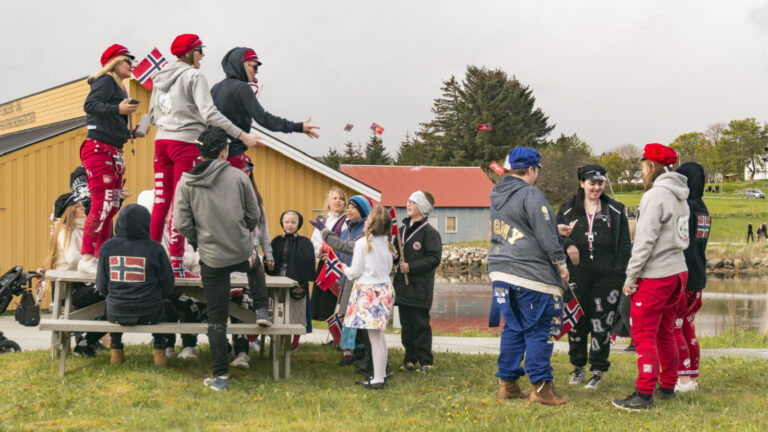
Typically the period starts in late April and culminates in a big party on 16 May. Russ then tend to participate in a parade on the Norwegian Constitution Day the following day, should their hangovers permit.
The period is defined by endless parties, late night tours in a “russ bus” that's kitted out with sound systems, pranks on old teachers and other students, and a whole lot more.
As for the parents? They tend to be OK with it, for the most part. Why? Well, they went through the process themselves.
Russ colours explained
Red overalls are most commonly associated with russ. However, the students can wear different colours. The colours denote the education of the student.
Red is for general studies students, including mathematics, English, physics, biology, history, etc. Although red is the most common colour, there are others too.
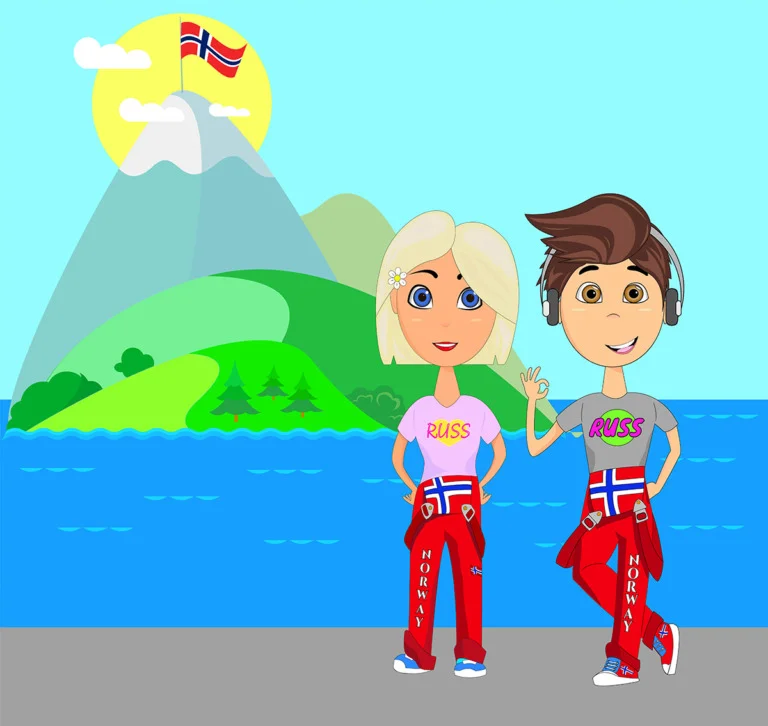
Blue is for Business Administration students, black is for vocational students (electronics, carpentry, culinary, etc), green is for agriculture students, and white is used only in some parts of Norway by healthcare or athletics students.
Russ challenges to earn knots
A cap is another element to the russ uniform. Russ can perform challenges to earn knots on the cap string. Challenges are many varied, but are usually lighthearted and fun although there are some that involve alcohol too.
Some examples include spending the night outside, crawling through a mall acting like a dog, or asking strangers for a condom. Typically there is a long list of challenges that russ can choose to complete.
There are also various dares involving dressing up and pranks to play on friends, teachers and younger students.
Russ bus and other vehicles
Some groups of russ pool their resources (and those of their parents) in order to buy a russ bus or other vehicle to serve as the HQ for the russefeiring. They also provide transport to larger gatherings of russ, often in rural areas.
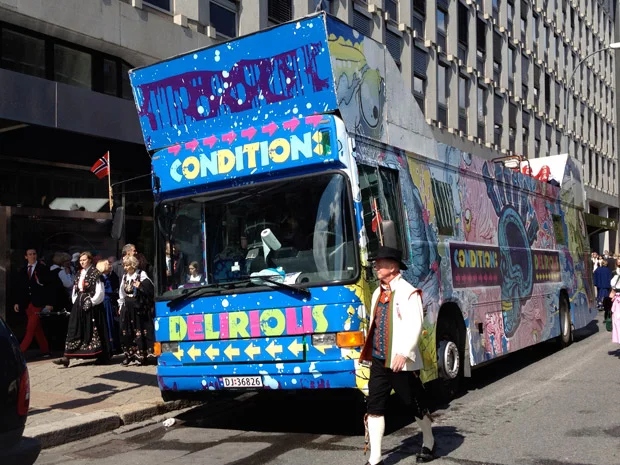
The buses are usually decorated on the interior and exterior and fitted out with an extensive sound system. If you're near a russ bus, you'll know about it.
A russ bus can be incredibly expensive, so some groups choose to pool together and buy a smaller van instead.
Russekort: Russ cards
For me one of the cuter traditions is the russekort (russ cards), collected by kids brave enough to ask for them. These are basically business cards with a photo and some kind of slogan and often incorrect phone numbers or other in-jokes.
To many Norwegian children, collecting russ cards is a fun activity during the period. If you're curious what the cards look like, you'll see plenty on the ground as the Russ period drags on!
When I first wrote this story, I recalled a moment in 2011 when I was enjoying a beer at the Ullevaal Stadion. I wore a red jacket, but regular trousers. Two young Norwegian kids came running up to me asking if I was russ, only to be disappointed when I had no cards to offer them.
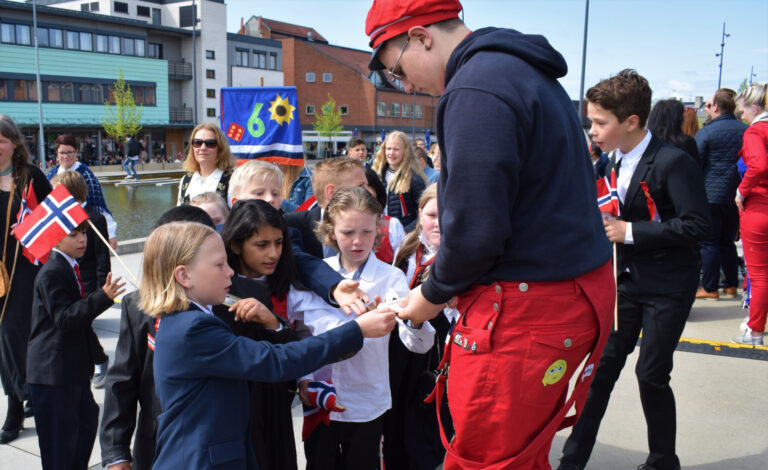
As I was 30 at the time, I was delighted to be mistaken for a teenager!
Russ: in their own words
There will be local variations to russefeiring. Back in 2012, I spoke with Alex, a then 18-year-old russ from Kongsvinger. Here's how he described the event.
“We have our graduation party the second last friday of april, to May 17 (The Norwegian Independence Day). High school graduates get “baptised” where we all round up at some predetermined location, and the city fire department dispatch a truck to hose us down with water. Then we put on the graduation costume. The graduation costume differs by your education.”
“The entire period between the graduation party and May 17 usually consists of mostly continuous partying, playing pranks on our old teachers, junior students, and parents, as well as driving around in vans in our designated colours with obscene markings written on them with spray cans and playing really loud music. It is also customary to take junior students hostage and dip them in water!”
Controversies of the russefeiring
While the russefeiring period is often characterised by pranks and good fun, the line does often get crossed. Every year, criticism of excessive partying and alcohol consumption fills the media.
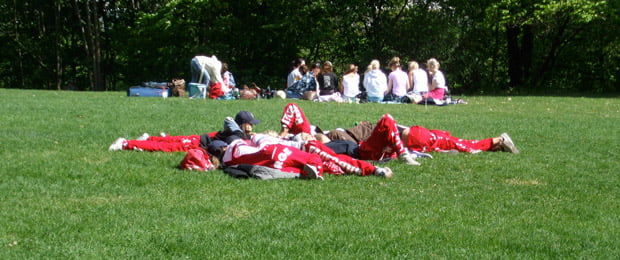
Some are also concerned about the financial strain that participating in the tradition puts on poorer families.
In the last decade, I've seen several examples of some students trying to make the tradition more inclusive and responsible, such as staying sober or hosting alternative celebrations that don't revolve around late night parties.
History of the russ celebration
The Norwegian russefeiring began in 1905 with the introduction of red russ caps as a symbol of higher education. Inspired by German students, the tradition initially only involved boys but later expanded to include other graduates.
Over time, similarly coloured overalls and more cap colors were introduced, making the celebration more inclusive.
As students reached the legal age for alcohol and driving, alcohol consumption increased and the tradition of buying and decorating old vehicles emerged. Due to safety concerns, regulations were introduced in the 1990s, reducing accidents involving russ vehicles.
Authorities attempted to curb excessive partying by moving final exams earlier, but this measure proved ineffective.


Thanks david for the post. I see them every day and I wondered why they are all dressed like this. I didnt know what it is. I thought maybe a football team or a hokey team etc. But now I know. Well I would like to see the part when the fire department will wet them all. That would be fun….
Hey! Thanks for the post 😀 it’s fun to see someone else describe this.
as a russ myself, it’s even more fun since I know all the insanity is accepted! well, now I’m one of those who’d rather be crazy on public transport rather than an expensive bus (spending >80.000kr on this celebration isn’t exactly a good idea). Also, something to add to the post; all the crazy things we do is to get specific objects to tie in our hats on May 17th. We need two fellow russ to witness our doing any of those (russeknuter) in order for them to be valid, so don’t be surprised to see lots of russ in shopping carts at fast food drive-throughs.. other “knuter” include hugging a police officer, flirting with one’s teacher, giving a rose to a random, attractive stranger, drinking half a liter of beer/cider without using your hands or getting assistance, doing a poledance on public transport… and so on. it’s all crazy, sometimes nice (donating money to charity and food to beggars), but always fun. There’s an official list of those “knuter” on russenshovedstyre.no, and it changes every year, so the weird tricks change.
Again, it’s fun 😀 Being surrounded by kids at least once a day, however….. not so much.
This makes me miss my Russ time! It was such a good time, with memories I’ll never forget (like camping in our teachers garden without their knowledge, and then serve them breakfast before school the next morning). It is fun to read an ‘outsiders’ take on it, and you got it pretty right 🙂
Really interesting! I didn’t know about it before 🙂
As a russ from the great year of 1984 (Russ ’84! Yeah!) I feel the need to give some perspective here … It might be that I’m getting older but it looks like being a russ becomes more expensive every year and filled with more russ activities than the year before. There are many commercial interest involved (organizers of parties etc.) that contributes to this. The whole logic of being russ also contributes to this snowball effect. Every year you will hear russ saying something like this: “This year I’m russ and it’s going to be the best russ season ever!”. And so it goes! This year’s russ will be a little bit louder and party somewhat harder than the russ last year. But I’m not complaining. I always travel abroad in the high season of Russ in mid-May.
And (as a russ of ’13), there’s a sort of stigma related to spending money… If you don’t spend at least 5000,- on the celebration, you’re considered somewhat of a weirdo and, following that, an outsider. Despite the fact that lots of us don’t even drink, let alone want to go to those big, organized parties…
Ahh, this post explains so much! I’m only in Norway for two months, and couldn’t figure what the deal was with all the teenagers in red overalls roaming in packs around the city on Saturday. I saw little kids approaching the teens and asking for something, but thought it was maybe candy. So glad to have come across your post — this makes way more sense than anything I would have been able to figure out on my own. 🙂
I live right near a very large high school and the first morning catching the train I was a little perplexed. A lot of high school kids (around the world) have similar sorts of celebrations as graduation nears although perhaps not quite to the organized extent of russ. It seems crazy to me to be so early in the year – school hasn’t even ended yet!